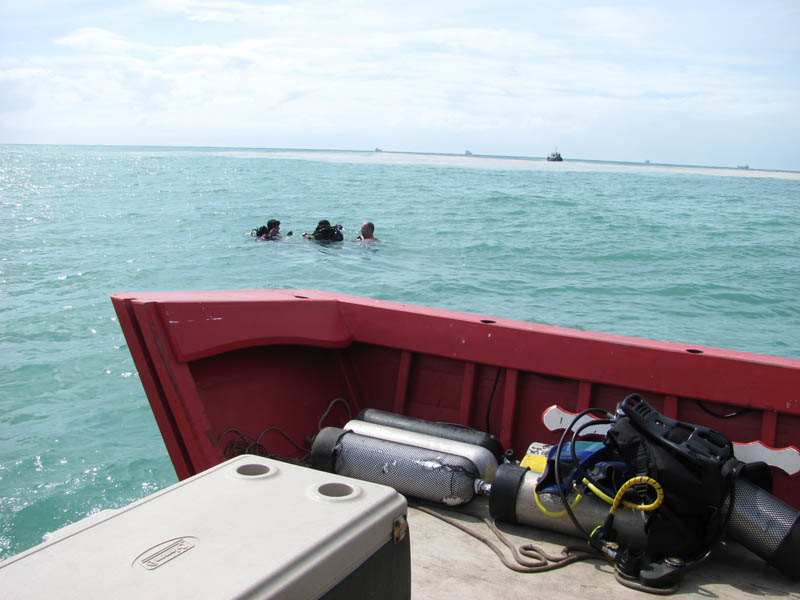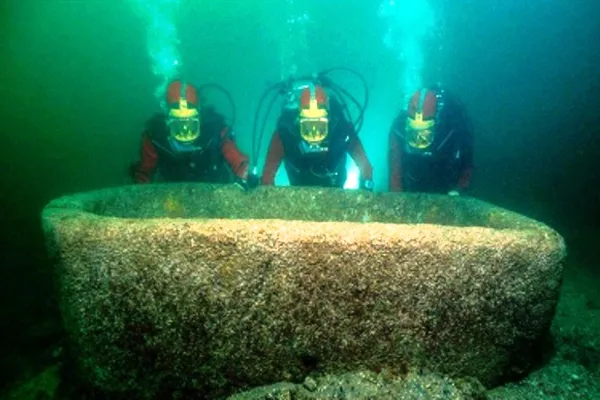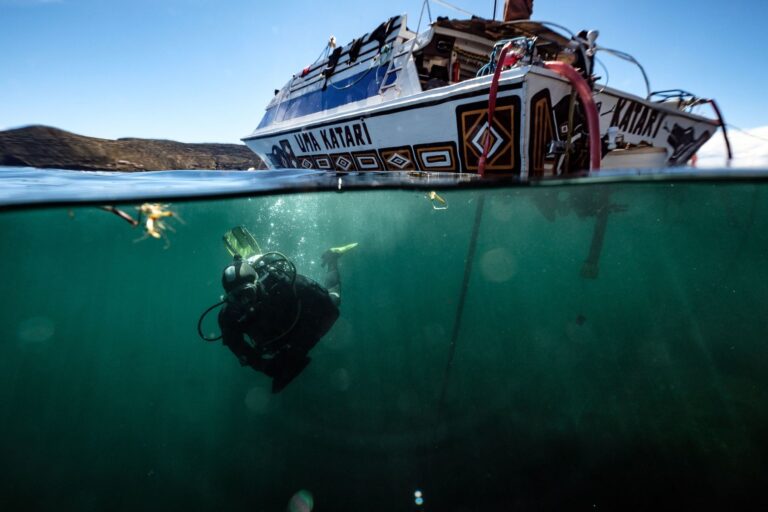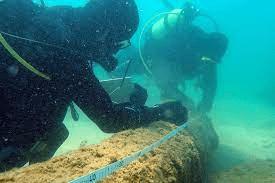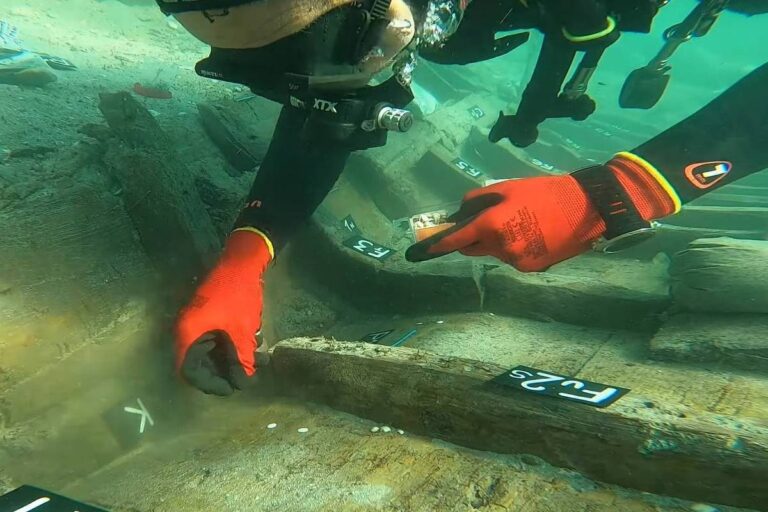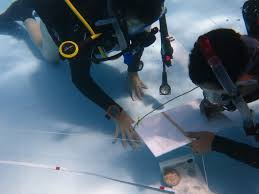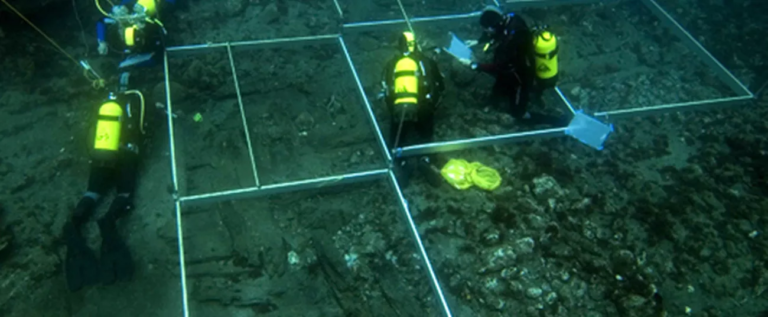Underwater Excavation Techniques: Revealing Secrets
The vast underwater world is teeming with an enigmatic allure, concealing countless mysteries and secrets waiting to be unraveled. To unveil these hidden treasures, underwater excavation techniques emerge as indispensable tools. In this article, we will delve into some of the widely adopted underwater excavation techniques, their importance, and their role in illuminating the secrets of the past.
The importance of underwater excavation techniques cannot be overstated, as they have revolutionized both archaeology and marine exploration. These techniques have allowed us to delve deep into the mysteries of the past, revealing the secrets that lie beneath the ocean’s surface. In this section, we will discuss the significance of underwater excavation in these fields, and how it has transformed our understanding of history and marine life.
Table of Contents
Significance in Archaeology and Marine Exploration
Underwater excavation techniques have opened up a whole new world of possibilities for archaeologists and marine explorers alike. By exploring the depths of the sea, we have been able to uncover hidden treasures and ancient artifacts, shedding light on cultures and civilizations long forgotten.
In archaeology, these techniques have allowed us to explore sunken cities, shipwrecks, and prehistoric settlements, providing invaluable insights into the lives of our ancestors. By meticulously excavating these underwater sites, we have been able to piece together the stories of the past, unraveling the mysteries that lie beneath the waves.
The significance of underwater excavation is not limited to archaeology alone. Marine exploration has also benefited greatly from these techniques, as they have enabled us to study and protect the diverse marine life that inhabits our oceans. By conducting underwater excavations, scientists have been able to delve into the ecosystems and habitats found beneath the surface, deepening our understanding of the delicate balance that exists within our oceans.
In conclusion, underwater excavation techniques are of paramount importance in both archaeology and marine exploration. They have transformed our understanding of history and marine life, allowing us to uncover secrets that were previously hidden. Through careful excavation and exploration, we continue to push the boundaries of knowledge and gain a deeper appreciation of the wonders that lie beneath the surface of our oceans.
Remote Sensing Methods
Remote sensing methods play a crucial role in underwater excavation by utilizing advanced technologies like sonar, magnetometers, and side-scan sonar. These tools are essential in identifying and locating potential archaeological sites beneath the ocean’s surface.
Sonar is a widely used remote sensing technology that uses sound waves to map the underwater terrain. By emitting sound pulses and measuring the time it takes for them to return, sonar can create detailed images of the underwater landscape. This helps archaeologists identify potential structures or artifacts that may be hidden beneath the seabed.
Magnetometers are instruments used to measure changes in magnetic fields. In underwater excavation, magnetometers are used to detect anomalies in the magnetic field that may indicate the presence of archaeological remains. For example, shipwrecks often have a significant magnetic signature due to the presence of iron or other magnetic materials.
Side-scan sonar is another remote sensing technology that provides detailed images of the seafloor. Unlike traditional sonar, side-scan sonar can create high-resolution images of the ocean floor, allowing archaeologists to locate potential archaeological sites with great precision. This method is particularly useful in identifying shipwrecks, submerged structures, or other features of interest.
By utilizing these remote sensing methods, underwater archaeologists can effectively identify potential archaeological sites and plan their excavation strategies accordingly. These technologies have revolutionized the field of marine archaeology, enabling researchers to uncover hidden secrets of the past and gain a deeper understanding of our history and marine life.
Marine Archaeology Diving
Marine archaeology diving is a specialized technique that plays a crucial role in uncovering the hidden secrets of the underwater world. This section will provide an insight into the procedure of marine archaeology diving, the tools and equipment used by divers, and the important role they play in the excavation process.
Marine archaeology diving involves trained divers descending into the depths of the ocean to explore and excavate underwater archaeological sites. Before diving, extensive research and planning are conducted to identify potential sites of interest. This may involve studying historical records, utilizing remote sensing methods, and collaborating with experts in various fields.
During the dive, divers rely on tools and equipment specifically designed for underwater excavation. These may include underwater metal detectors, underwater cameras, underwater communication systems, and specialized excavation tools such as suction dredges and water jets. These tools allow divers to carefully excavate and document artifacts while preserving their integrity.
Divers play a crucial role in the excavation process as they are responsible for physically uncovering and retrieving artifacts from the underwater sites. Their training requirements are extensive and rigorous, ensuring their safety and the preservation of the artifacts. Divers need to be skilled in underwater navigation, artifact identification, and archaeological recording techniques.
Not only do divers need to be physically fit and have excellent diving skills, but they also need to possess a deep understanding of archaeology and marine science. This enables them to interpret the significance of the artifacts they discover and provide valuable insights into the history and cultural context of the submerged sites.
Overall, marine archaeology diving is a highly specialized field that combines diving expertise with archaeological knowledge. The underwater excavation techniques used by divers, along with their dedicated training, allow them to reveal the secrets hidden beneath the ocean’s surface. Their work plays a vital role in pushing the boundaries of our understanding of history and marine life.
Underwater Mapping and Surveying
Mapping and surveying are essential components of any underwater excavation project. The accurate depiction and recording of excavation sites is crucial for researchers and archaeologists to gain a comprehensive understanding of the submerged landscape and the artifacts it holds.
Mapping underwater excavation sites allows archaeologists to visually represent the layout and features of the site, providing a clear and detailed overview of the area. This enables the identification and analysis of different structures, artifacts, and their spatial relationships. One of the modern technologies commonly used in underwater mapping is photogrammetry. Using multiple photographs taken from different angles, photogrammetry produces highly accurate 3D models of submerged archaeological sites. This enables researchers to analyze the site remotely and make precise measurements without disturbing the delicate ecosystem or artifacts.
In addition to photogrammetry, Lidar technology is also utilized in underwater mapping and surveying. Lidar, which stands for Light Detection and Ranging, uses laser beams to measure distances and create detailed underwater topographic maps. These maps not only provide a high-resolution representation of the excavation site, but also enable researchers to identify potential areas for further exploration, such as submerged geological formations or hidden artifacts buried beneath the seabed.
The advances in underwater mapping and surveying techniques have revolutionized the field of underwater archaeology. With the help of modern technologies such as photogrammetry and Lidar, researchers are now able to create detailed and accurate 3D models of excavation sites. This not only facilitates data analysis and interpretation but also aids in the conservation and preservation of underwater artifacts.
Underwater Excavation Techniques
Underwater excavation techniques are essential in uncovering the hidden treasures that lie beneath the vast underwater world. These techniques play an integral role in revealing the secrets and mysteries of the past. Let’s explore some of the most commonly used techniques and their significance in underwater excavation.
Dredging
Dredging is a popular technique employed in underwater excavation. It involves the use of a dredge to remove sediment and debris from the seabed. This technique allows archaeologists and researchers to carefully sift through layers of sediment to uncover archaeological artifacts or other valuable objects. Dredging is particularly effective in areas with loose sediment, providing a thorough and systematic approach to excavation.
Airlifting
Airlifting is another technique used to excavate underwater sites. It involves the use of compressed air to create a vacuum that lifts sediment and artifacts from the seabed. This method is effective in areas with a hard or rocky substrate where dredging may not be suitable. Airlifting allows for precise control and careful extraction of delicate artifacts, ensuring their preservation during excavation.
Suction Excavation
Suction excavation is a technique that utilizes powerful suction devices to remove sediment and uncover objects buried underwater. It involves using a specialized suction dredge that can accurately extract artifacts without causing damage to surrounding structures or delicate marine life. This method is particularly beneficial in areas where preservation is a priority, as it minimizes disturbance to the surrounding environment.
These techniques offer numerous individual benefits and are suitable for various underwater excavation applications. Dredging is ideal for large-scale excavations, while airlifting and suction excavation are well-suited for precise and delicate projects. By employing these techniques, researchers have successfully uncovered numerous significant archaeological sites and made remarkable discoveries.
One notable example is the excavation of the Antikythera Shipwreck off the coast of Greece. Through a combination of dredging and airlifting techniques, archaeologists unearthed a 2,000-year-old mechanical device known as the Antikythera Mechanism. This discovery revolutionized our understanding of ancient technology and astounded the archaeological community.
In conclusion, underwater excavation techniques are crucial in revealing the secrets hidden beneath our oceans. Dredging, airlifting, and suction excavation are just a few examples of the techniques used in this field. Their individual benefits and suitable applications have led to remarkable discoveries and advancements in various fields, such as archaeology, history, and marine science. It is through these techniques that we continue to unravel the mysteries of the past and gain a deeper appreciation for the wonders that lie beneath the surface of our oceans.
Preservation and Conservation
Preserving underwater artifacts is no easy task and presents numerous challenges. The harsh marine environment, dominated by saltwater and fluctuating temperatures, poses a constant threat to the integrity of these historical treasures. It is imperative to implement effective conservation methods to ensure their long-lasting preservation.
One of the main challenges faced in preserving underwater artifacts is corrosion. Over time, metals can corrode when exposed to seawater, leading to the deterioration of delicate objects. This corrosion process can be accelerated by the presence of other factors such as oxygen and pollutants. Proper conservation techniques, such as desalination or the use of chemical inhibitors, are employed to impede this destructive process.
The importance of conservation cannot be overstated when it comes to maintaining the integrity of excavated items. Exposure to air can lead to the rapid degradation of submerged objects. The transition from a water environment to an oxygen-rich atmosphere can cause chemical reactions, resulting in the rapid disintegration of the artifacts. To prevent this, specialized conservation facilities, known as wet labs, are used to carefully control the transition process and ensure the long-term preservation of the artifacts.
Various conservation techniques are employed to protect underwater discoveries. One such technique is electrolytic reduction, which involves the use of low-voltage electricity to remove harmful minerals from artifacts without causing damage. Consolidation, another commonly used method, involves the application of consolidants to increase the structural strength of fragile objects, such as pottery or wood, that may have become weakened over time.
In conclusion, the challenges faced in preserving underwater artifacts are significant, but through effective conservation methods, we are able to protect and maintain the integrity of these invaluable historical treasures. The use of desalination, electrolytic reduction, and consolidation, among other techniques, allows us to safeguard the artifacts as they are brought to the surface, ensuring their long-term preservation. Ongoing research and advancements in conservation techniques are essential in ensuring that future generations can continue to appreciate and learn from the secrets revealed through underwater excavation.
Future Prospects and Technological Advances
With each passing year, technological advancements continue to push the boundaries of underwater excavation techniques, offering exciting prospects for the future. These emerging technologies are poised to revolutionize the fields of archaeology, history, and marine science.
One notable development is the use of remotely operated vehicles (ROVs), which have the potential to greatly enhance the efficiency and safety of underwater excavation. These ROVs are equipped with advanced sensing capabilities that allow them to explore even the most challenging underwater terrains. By utilizing high-resolution cameras, sonar systems, and magnetometers, ROVs can accurately identify potential archaeological sites and assist in the excavation process.
Another promising advancement is the application of robotic technologies in underwater exploration. These robots, capable of diving to great depths, can access areas that were previously considered inaccessible to human divers. Equipped with specialized tools and equipment, these robots can perform tasks such as underwater mapping, archaeological site surveying, and even precise artifact extraction. This not only expands our ability to uncover submerged secrets, but it also reduces the associated risks and challenges faced by human divers.
Advancements in data analysis and processing also play a crucial role in the future of underwater excavation. Modern data collection methods, such as photogrammetry and Lidar, allow for more accurate mapping and surveying of underwater sites. By utilizing machine learning algorithms and artificial intelligence, the vast amounts of data collected during excavations can be analyzed more efficiently, leading to a greater understanding of underwater archaeological finds.
The impact of these technological advances extends far beyond archaeology. They have the potential to revolutionize our understanding of history, marine life, and environmental conservation. By uncovering hidden secrets of the past, underwater excavation techniques provide valuable insights into the origins and development of civilizations. Furthermore, the discoveries made through these techniques can contribute to our understanding of climate change, sea-level rise, and the overall health of our oceans.
In conclusion, the future of underwater excavation techniques holds great promise. Emerging technologies such as remotely operated vehicles, robotics, advanced data analysis, and artificial intelligence have the potential to transform the way we uncover and interpret underwater secrets. These advancements not only benefit the fields of archaeology, history, and marine science but also have broader implications for environmental conservation and our understanding of the world around us. As ongoing research and preservation efforts continue, it is essential for us to appreciate and explore the wonders that lie beneath the surface of our oceans.
Conclusion
Underwater excavation techniques have proven to be indispensable in the quest to uncover the hidden secrets and mysteries of the vast underwater world. Through the use of advanced technologies and methods, these techniques have revolutionized our understanding of history, archaeology, and marine exploration.
The significance of underwater excavation techniques in revealing hidden secrets cannot be overstated. By exploring ancient shipwrecks, underwater cities, and other submerged artifacts, researchers have been able to gain valuable insights into the past. These discoveries shed light on the lives of our ancestors, their cultures, and the civilizations that once thrived beneath the waves.
Ongoing research and preservation efforts are essential to continue unearthing the treasures that lie beneath the surface of our oceans. With each excavation, new clues emerge, leading to further discoveries and a deeper understanding of our past. It is crucial to preserve these artifacts and the knowledge they provide for future generations.
We encourage readers to explore and appreciate the wonders that await beneath the sea. The underwater world holds countless secrets yet to be revealed, and each dive into its depths brings us closer to unlocking the mysteries of our collective history. By delving into underwater excavation techniques and supporting ongoing research, we can contribute to the preservation and understanding of our underwater cultural heritage. Let us dive in, explore, and marvel at the hidden treasures that the oceans hold.

